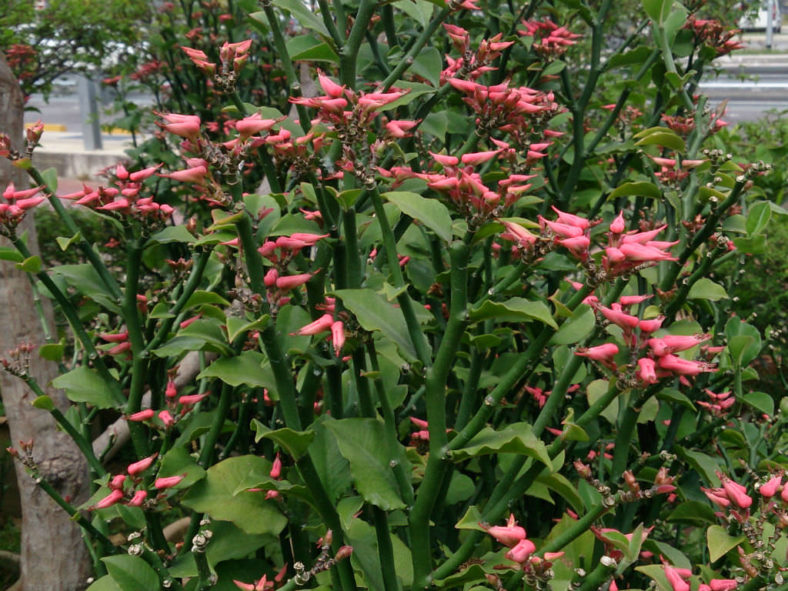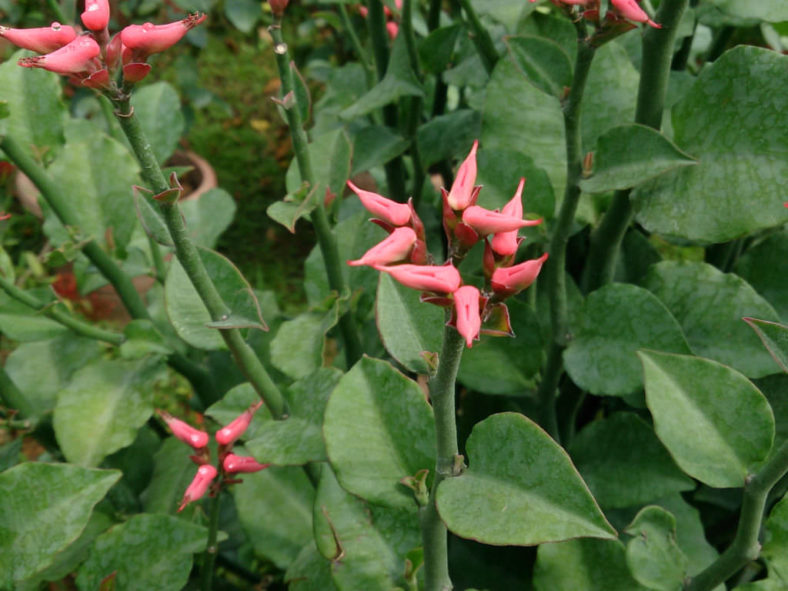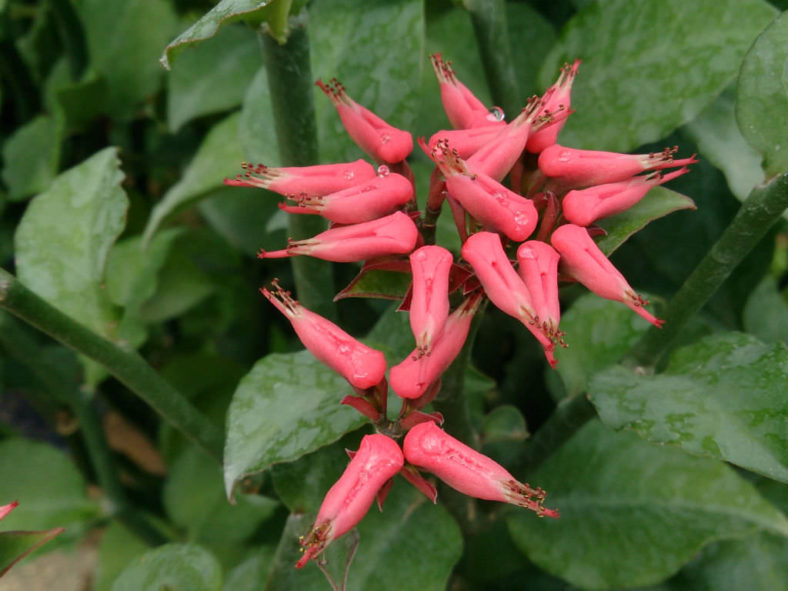Scientific Name
Euphorbia tithymaloides L.
Common Name(s)
Buck Thorn, Christmas Candle, Cimora Misha, Devil's Backbone, Fiddle Flower, Ipecacuahana, Jacob's Ladder, Japanese Poinsettia, Jewbush, Milk Hedge, Jew's Slipper, Myrtle-leaved Spurge, Padus-leaved Clipper Plant, Redbird Cactus, Redbird Flower, Red Slipper Spurge, Slipper Flower, Slipper Plant, Slipper Spurge, Timora Misha, Zig Zag Plant
Synonym(s)
Euphorbia tithymaloides subsp. tithymaloides, Pedilanthus tithymaloides, Tithymalus tithymaloides
Scientific Classification
Family: Euphorbiaceae
Subfamily: Euphorbioideae
Tribe: Euphorbieae
Subtribe: Euphorbiinae
Genus: Euphorbia
Origin
Euphorbia tithymaloides is native to tropical and subtropical North America and Central America.
Description
Euphorbia tithymaloides, formerly known as Pedilanthus tithymaloides, is an erect succulent shrub with simple green leaves arranged alternately on green branches with a zigzag shape. It can grow up to 8 feet (2.4 m ) tall, branching profusely from the base. The leaves are smooth with midrib and 7 to 9 pairs of lateral veins and entire to slightly wavy margins. They are ovate, pointed at the tip, and can measure up to 3.2 inches (8 cm) long and 2 inches (5 cm) wide.
The branches terminate in dichotomous cymes, with a peduncle supporting each flower. The floral leaves are bifid and ovate, while the involucral bracts are bright red, irregularly acuminate in shape, with a long, thin tube. The male pedicel is hairy, while the female is glabrous. The flowers generally appear in mid-spring.

Hardiness
USDA hardiness zones 9b to 11b: from 25 °F (−3.9 °C) to 50 °F (+10 °C).
How to Grow and Care
Euphorbias are very easy to care for. These plants require a little pampering to become established, but once they are, they are self-sufficient. More die from too much care and watering than from neglect. Euphorbias need well-draining soil and lots of sunlight. They are not particular about soil pH but cannot tolerate wet soil. Unlike most succulents, Euphorbia does not handle long periods of drought well. It may need weekly watering during the summer. Water whenever the soil is dry several inches below the surface. Water deeply, but don't let them sit in wet soil, which can cause root rot. Add some organic matter or fertilizer to the planting hole. If you are growing them in containers or your soil is poor, feed them with a half-strength fertilizer monthly.
These succulents can be grown from seed, but they can be difficult to germinate (or even find). They are usually propagated by cuttings. This can be tricky because of the exuding sap. Rooting hormone is recommended with Euphorbias. They tend to grow problem-free, but there are a few pests and diseases to be alert for.
Learn more at How to Grow and Care for Euphorbia.
Cultivars
Links
- Back to genus Euphorbia
- Succupedia: Browse succulents by Scientific Name, Common Name, Genus, Family, USDA Hardiness Zone, Origin, or cacti by Genus
Photo Gallery
Click on a photo to see a larger version.

